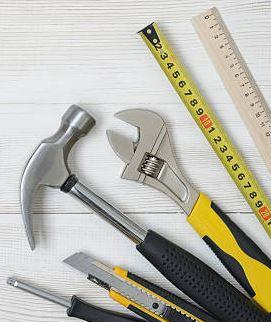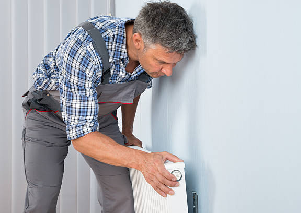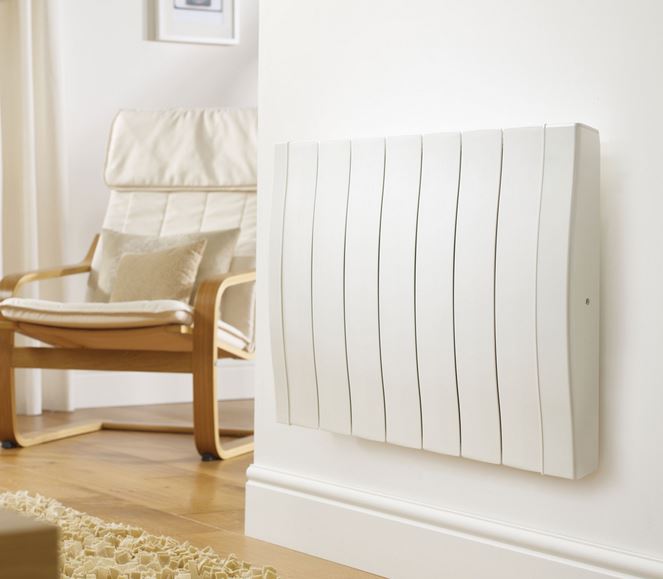
The RC Wave & DIY installation
Unlike gas radiators, electric wall radiators do not require a costly third party to install them. Instead you can do it all yourself in under 10 minutes, with just a little DIY knowledge. Wall mounted electric heaters, such as the slimline Haverland RC Wave, allow for ‘do it yourself’ installation. Simply plug the radiator into a socket and attach the feet, or alternatively, wall mount the electric heater. Wall mounting the Haverland RC Wave is extremely straight forward due to the lightweight dry thermal heating elements, which allow for an ultra-slim contemporary design, and make it even easier to lift and install.
Wall mounting installation guide – step by step

What you will need
- Pencil
- Hammer drill
- 6mm - 8mm drill bit (depending on the model)
- Safety goggles
- Screwdriver
Step 1: Mark the wall
Firstly, decide where in your room the electric wall heater will be situated. Then, using a pencil and the template provided, mark the wall where the mounting brackets will be placed.
Step 2: Drill four holes
*NOTE* Make sure safety goggles are worn throughout the drilling process.
Before drilling, make sure there are no hidden pipes or electric cables in the area you are drilling into. Secondly, using the pencil marks as references, drill 4 holes into the wall using the masonry bit attached to the hammer drill.
Step 3: Fix mounting brackets
Line up the mounting brackets with each of the four holes in the wall. Then, using the screw driver, screw the mounting brackets securely into the wall.
Step 4: Hang the radiator on the wall
Line the electric wall radiator up with the mounting brackets and simply hang it upon them. The radiator should be horizontal, sturdy and not tilted.
Step 5: Screw in the safety screw
Many electric radiators, such as the Haverland models, come with safety screws. These simply ensure that the radiator stays firmly mounted to the brackets.
Add these screws to the top of the bracket and tighten until secure.
Step 6: Plug into a 13-amp socket
Plug the cable into an ordinary 13-amp socket and switch on. The cable is generally around 1.5m long and can be shortened if necessary.
And that’s it: it’s really that simple...
Wall mounting electric radiators in bathrooms
As a general rule, we would shy away from installing an electric radiator in a bathroom because there is a temptation to hang towels over the appliance to dry, which can obstruct ventilation on the heater and cause a hazard. Any electrical appliance intended for bathroom use MUST be professionally hardwired by a qualified electrician – this is NOT a DIY task.

Some electric radiators can be safely used in bathrooms provided they are hung in a Zone 3 area and hardwired into a fused spur. However, this is strictly a job for a registered electrician. A product's IP rating is a useful way to assess a product's suitability for bathroom installation and it’s always best to check the manufacturer’s guidelines beforehand. Some products, like dedicated towel rails, are designed for bathroom use and can be installed by a qualified electrician in no time, providing you with effective bathroom heating and lovely, warm towels!
Despite the obvious costs involved in hiring an electrician, installing electric heaters will still be significantly cheaper than having central heating radiators installed. Hardwiring an electric radiator is a routine job for an electrician: most will complete the job in under an hour, with the minimum amount of mess.
For additional help with electric wall heater installation, feel free to refer to our RC Wave instructional video. If you’re looking for a more discreet fitting, check the NICEIC website to find a qualified electrician in your area. For further information about our products, give our expert advisors a call...







